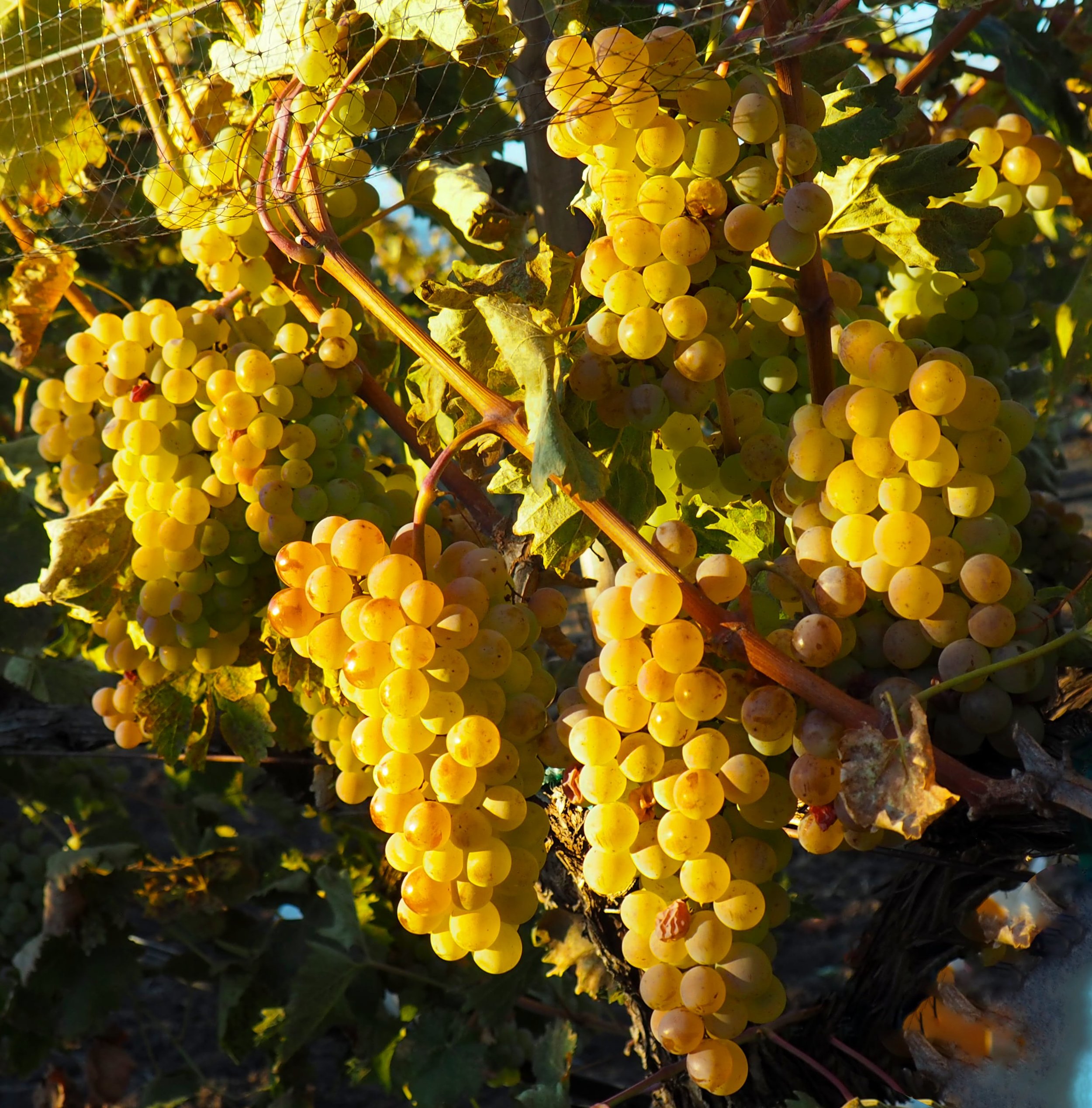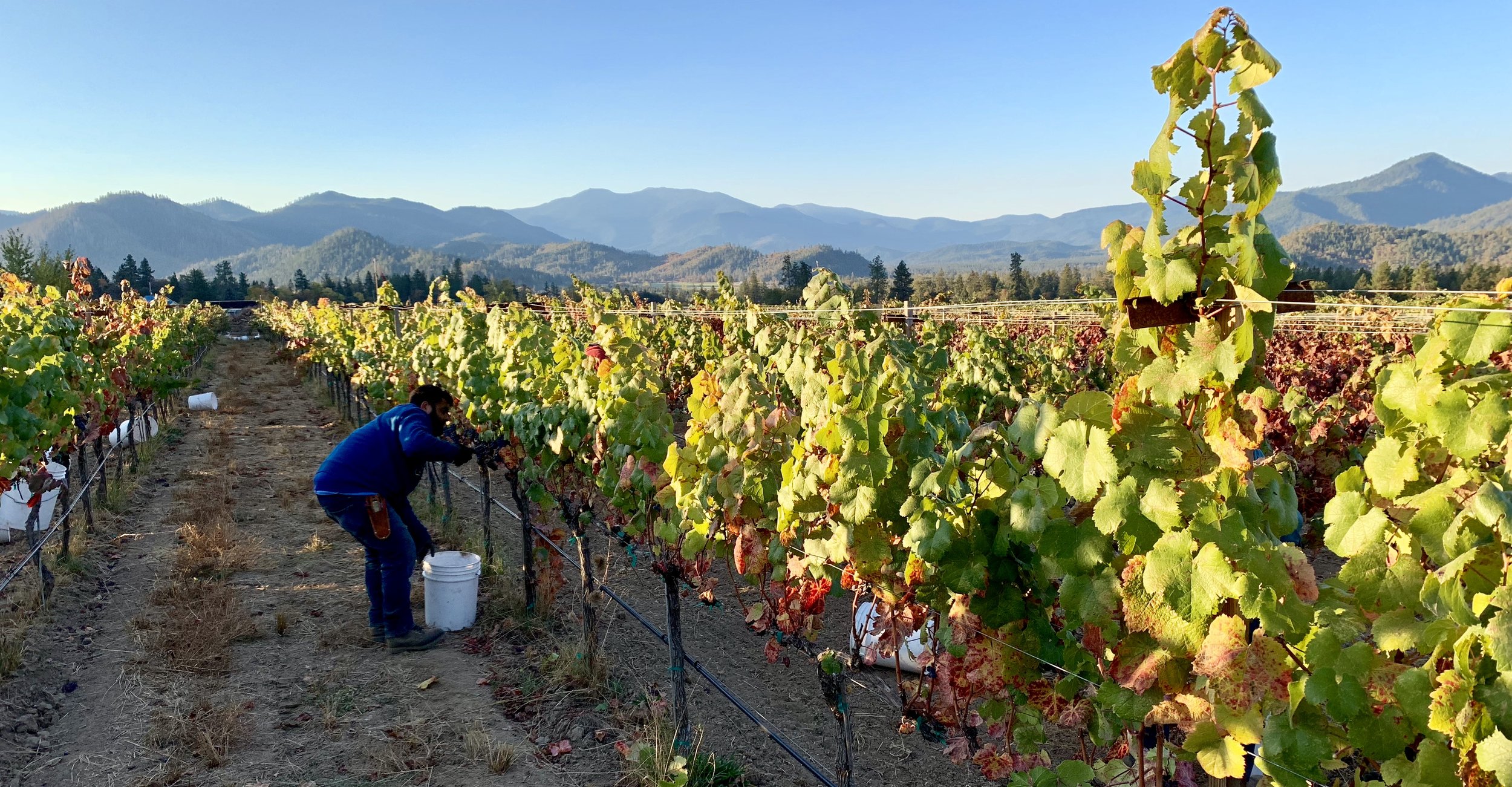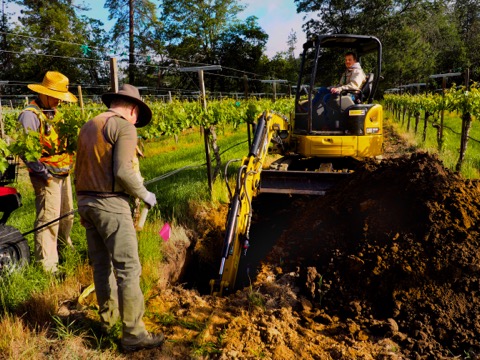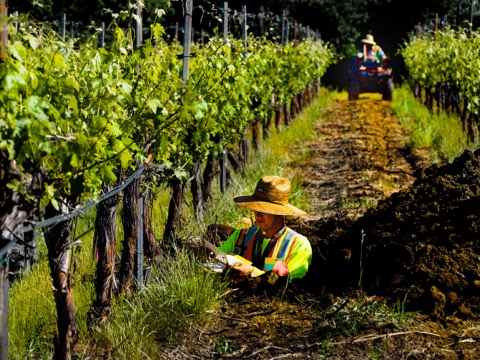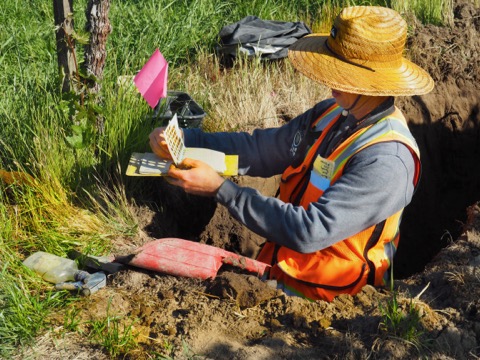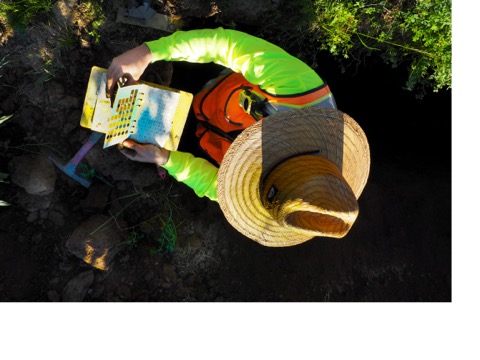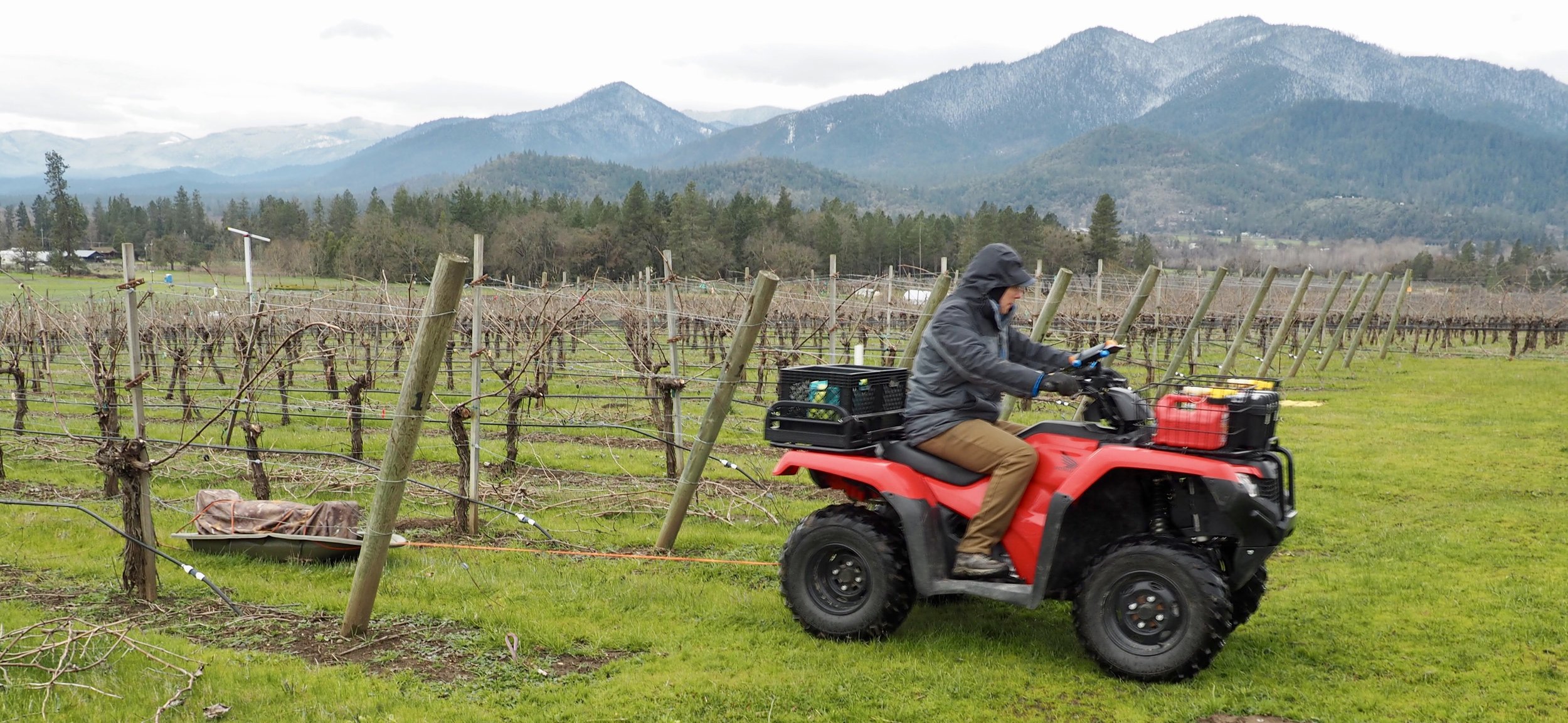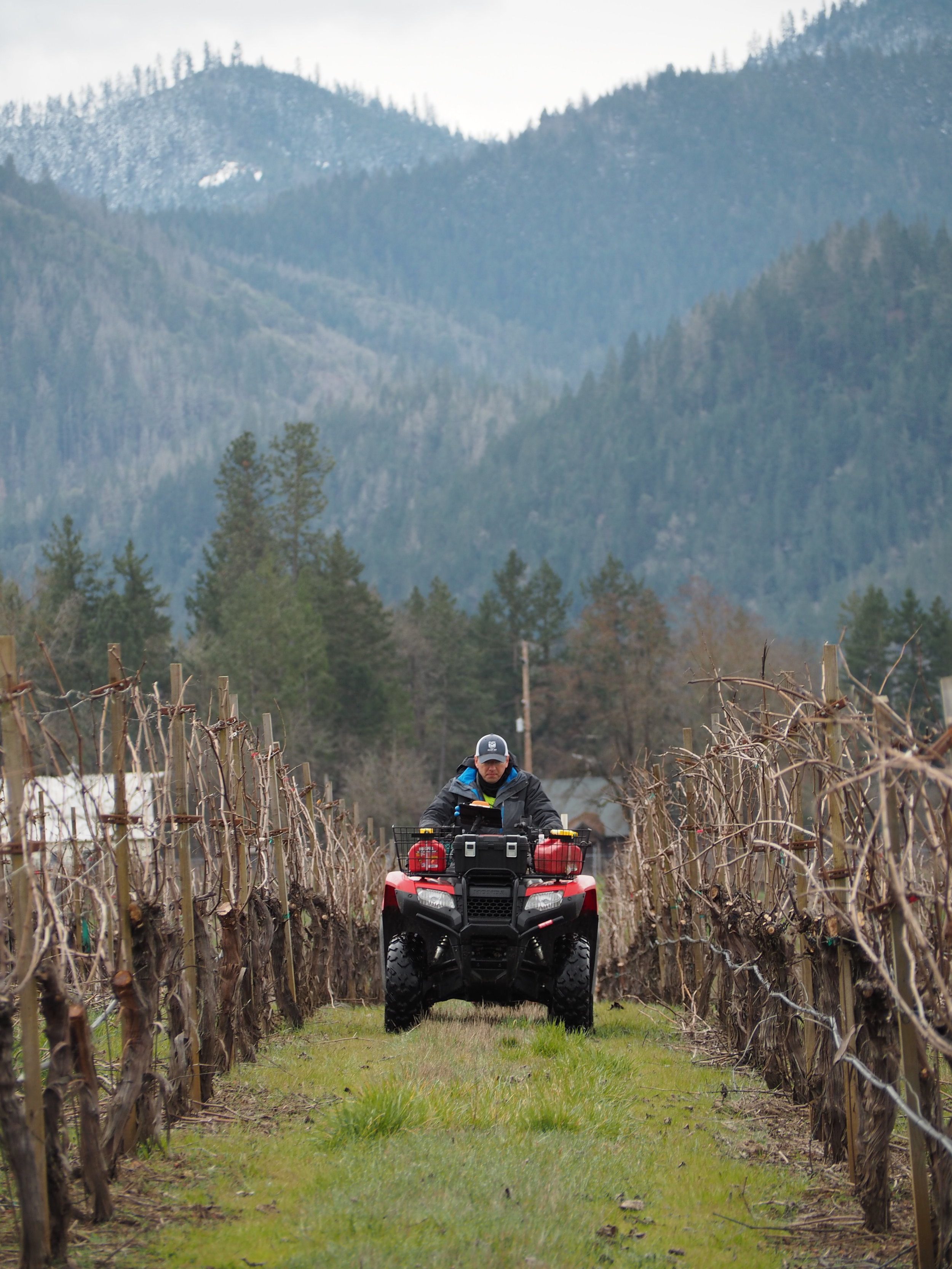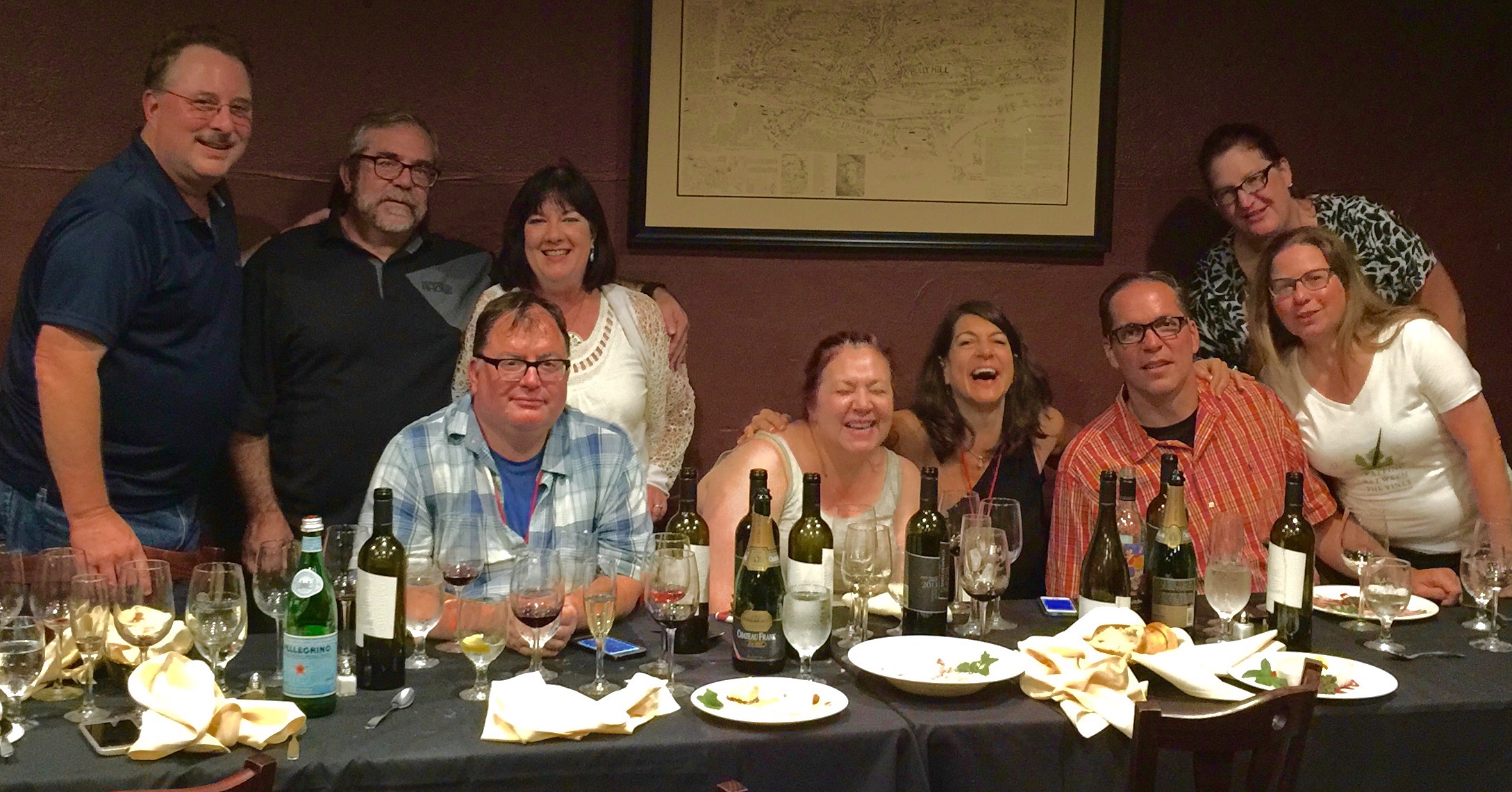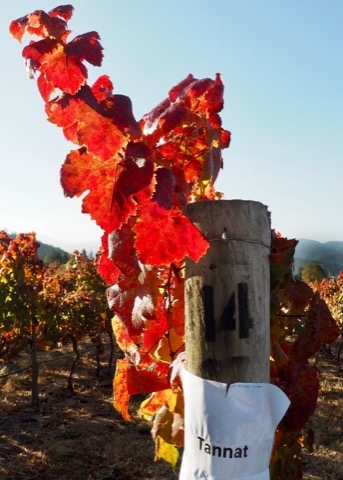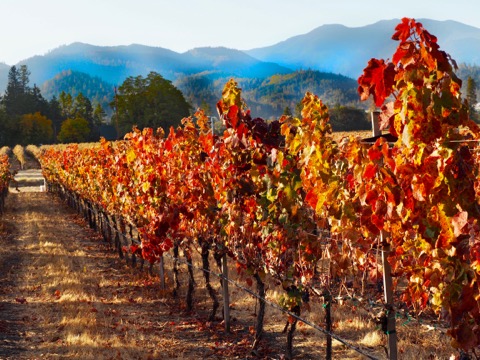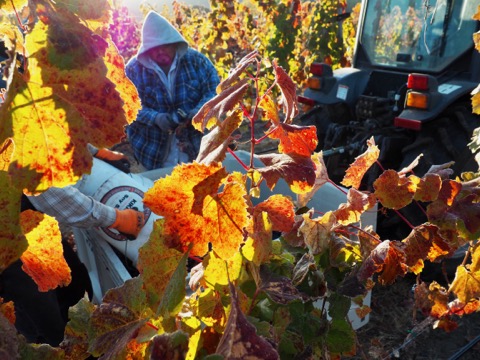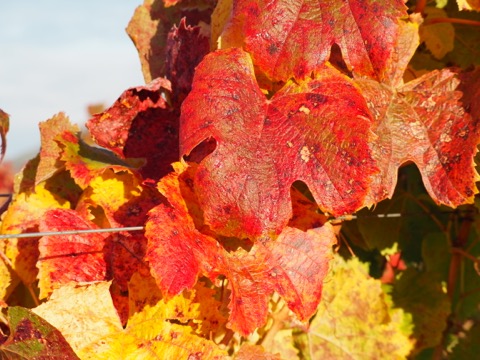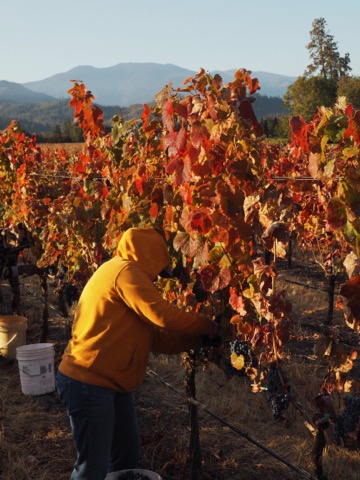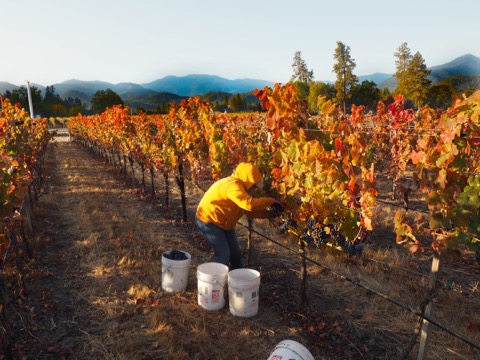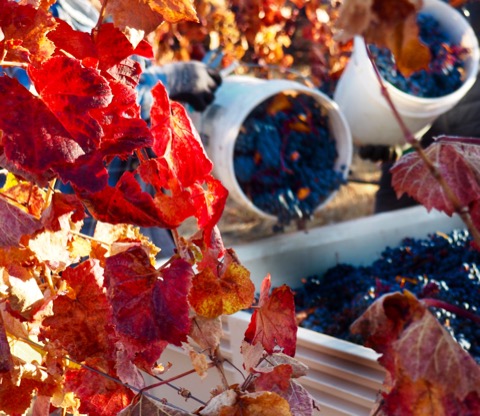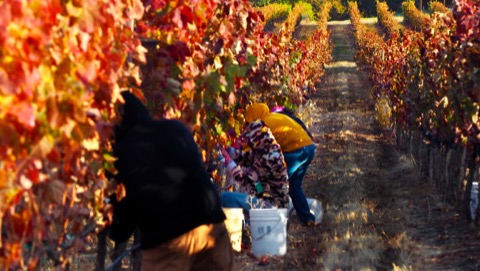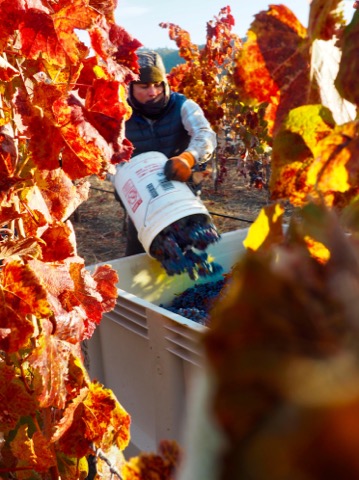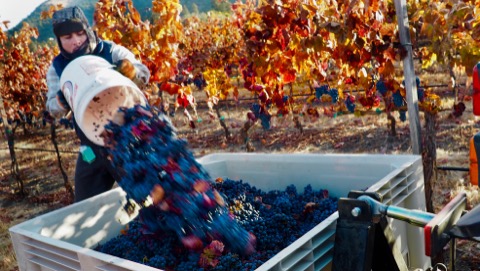Biodynamic Fake News
It’s not their fault, but you see it every week. Fine wine writers printing misconceptions and flat-out wrong information on biodynamics - yes, fake news.
It’s not their fault, it’s ours. Those of us who farm wine grapes biodynamically are not doing a good job of getting out the real story. That could be because the biodynamic movement is not a monolith, but a complicated web with divergent branches and diverse self-interests. That makes for a muddled message and creates an information issue biodynamic winegrowers have to confront. While there may be divergent opinions and methods within the biodynamic community, all share a common final goal.
Here are some random recent examples of the media muffing biodynamics. The authors and publications are irrelevant as inaccuracies like these are more the rule than the exception.
”And if you’ve heard of one thing to do with biodynamics, it is probably that cow horns filled with fermented cow manure are buried in the vineyards to encourage soil fertility." "Cow horns are buried throughout the vineyard."
Biodynamic winegrowers do not bury cow horns “filled with fermented cow manure…throughout the vineyard”. In this case, the reference is to the production of Biodynamic Preparation 500. To prepare BD 500, you place very fresh, raw organic cow manure in cow horns in the fall and bury them in a single pit in a specially selected site. There they ferment over the winter and the horns are dug up in the spring. The finished BD 500 is mixed with water and applied to your soils. It assists with the formation of humus, increases available phosphorous, soil mycorrhiza and the water and nutrient holding capacity of the soil. The goal of BP 500 is to regenerate the natural microbiome and raise the quality of your soils.
“Naturally occurring cycles like moon phases dictate when to harvest ”
Moon phases do not “dictate” when we harvest at Troon Vineyard. That the phases of the moon have an impact on the natural rhythms of agriculture is a time-tested (and scientifically proven) reality. Following the ascending and descending cycles of the moon is something any natural farmer tries to do. However, the operative word here is “tries”. It’s one thing to follow these cycles in your home garden, but it’s another thing on a commercial farm. We certainly try to follow the lunar cycles, but often the realities of Mother Nature means you have to move forward. When you have to prune fifty acres of vines by a specific date, and you can’t prune when it’s raining (due to disease pressure), you can only do your best to hit the right days. When the fruit is ready to harvest, but it’s not a fruit day, but it’s going to rain three inches tomorrow your choice is easy - you pick. Any positive attributes you gain by picking on a certain day will be more than negated by the next day’s rain. We try to follow these lunar cycles whenever possible as we are seeking every advantage, no matter how small, to add that extra bit of nuance and life to our wines. The biodynamic calendar identifies ideal days for certain types of vineyard work. You try to prune on fruit days and cultivate on root days. As our goal is exceptional fruit quality, doing work on certain days is a way to fine-tune the quality of our fruit. However, we do not seek viticultural management from the man-in-the-moon, we just want a little advice, and will make our decisions based on what experience, common sense and science have taught us.
”Special concoctions of herbs, minerals, and manure may also be planted in the soil to aid fertilization.”
“Herbs, minerals and manure” are not planted in the vineyard soil to help fertilization. A range of plants (BP 502 to 507 - yarrow, chamomile, stinging nettle, oak bark, dandelion, valerian) are fermented then added to compost piles to aid in developing the right bacterial and fungal balance in the finished compost, which will then be applied to the vineyard - back to the microbiome again. It is important to note that while compost contains some beneficial minerals, it is not fertilizer. The point of biodynamic compost is to build the humus and microbiome of your soil. A healthy plant in healthy soil does not require additional chemical fertilization. This is the cornerstone of biodynamic practice. When we need to fertilize due to soils depleted by years of conventional agriculture or when growing a perennial crop like grapes, we add natural fertilizers like fish emulsion (think SNL’s Bass-O-Matic) and kelp. No biodynamic farmer would add raw manure to their field without fully composting it first. Besides the obvious health concerns, raw manure cannot do the job of properly made compost. Our compost is made from organic cow manure from our next door neighbor Noble Dairy, organic hay and our own pomace (grape skins and stems after pressing during harvest), which is then carefully composted for the better part of a year before being applied to our vineyard.
"there’s even a calendar for optimal wine-tasting days”
Then there is the currently fashionable calendar for “optimal wine-tasting days” - there’s even an app for that. However, the flower, leaf, root and fruit day thing is not part of Rudolf Steiner’s original agricultural lectures and was only added to the biodynamic culture in the 1950s by Maria Thun in Germany. Her concepts were built on research in her garden and, while her results have never been supported by independent research, there is strong anecdotal evidence that something is indeed at work here when it comes to the inner workings of plants. The base of these theories is that the moon’s gravity has an influence on the liquid in plants and soils much the same as it does on tides. A reasonable assumption. To me it is a stretch, at best, to apply this same theory to a glass of wine on your kitchen table. However, those same influences could affect the tasters themselves. Whatever the case, these concepts are a not a required part of Demeter Biodynamic certification, which is a statement in itself. Optimal wine-tasting days may have sprung from biodynamic ideas, but they are not part of biodynamic practice. However, it can be a useful excuse in a pinch if a customer is less than happy with your wine.
Biodynamics is a work-in-progress. When Rudolf Steiner gave his lectures in the early 1920s in Germany, he was living in a world in chaos, the same chaos that gave birth to the Nazis. World War I had just devastated Europe and, on the farm, the introduction of chemical, industrial agriculture terrified many people. It is in this climate that Steiner gave his agricultural lectures at the request of a group of concerned farmers. What is called biodynamics today was only outlined by Steiner himself in his lectures, and he died just a few years after giving them. Many of the practices considered essential practices of biodynamics today were layered on by those that came after him. While Steiner gave voice to the fears of that era, what we call biodynamics today is more the work of a movement than one person.
That work continues today and the growing number of winegrowers adopting biodynamics is having a tremendous impact on the movement’s future. Each year more is learned about biodynamics, and now modern agricultural science is moving towards the fundamental farming practices that define biodynamics - that the key to a healthy plant is healthy soils. Everything today is about the microbiome - in our guts and our soils. Biodynamic farmers have been giving their soils probiotics for decades. Science is just now catching up to us.
From what I have been able to read and understand (not always the same thing when reading Steiner) in Steiner’s books, he saw his concepts as only a beginning of an individual’s quest for spiritual and intellectual growth. While he did not approve of alcohol, I still think he would approve as winegrowers the world over push the pursuit of biodynamics forward. Today winegrowers are at at the forefront of connecting science and biodynamics. The winegrowing community is creating what I call practical biodynamics. Voodoo vintners we are not.
Who is to say what biodynamics will mean fifty years in the future? The only sure thing is that it will be as different from today’s practices as we are from the first practitioners in the 1920s. It will always be a work-in-progress as we will never understand everything. Mother Nature will always keep some secrets to herself.
Now that I think about it, it’s no wonder that writers struggle with understanding the practice of biodynamics, so do we. Agricultural knowledge is always evolving. There is much we don't know and much we will never know. Bringing science and biodynamics together will be the next chapter.
That’s a story worth telling well.
Some recommended reading on biodynamic winegrowing
Biodynamic Wine by Monty Waldin - certainly the most complete book available on the topic
Voodoo Vintners (in spite of the title) by Katherine Cole



